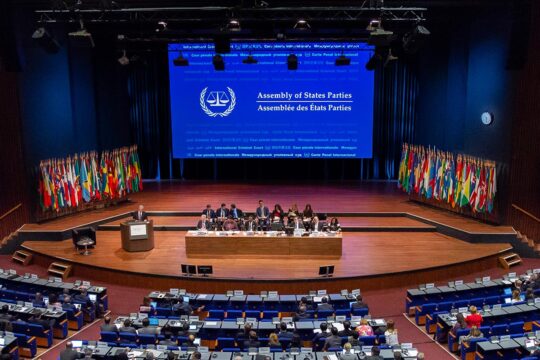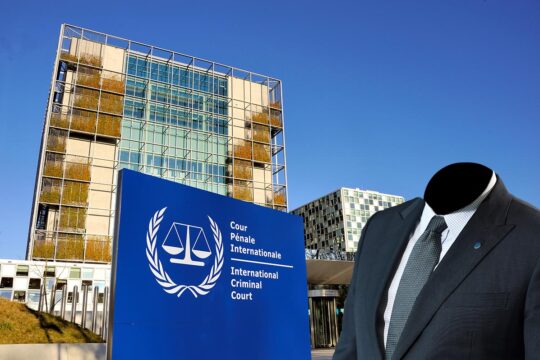The sixth International Rights of Nature Tribunal (IRNT) met on November 11, 2025 in Belém (Brazil), on the sidelines of the COP30 climate conference held there from November 10 to 21. After two preparatory sessions, the 17 judges of this symbolic court produced a four-page text entitled “A New Pledge for Mother Nature”.
Compared with previous rulings by the court, this text is not particularly novel. Admittedly, it does refer to some recent examples of “soft law” (non-binding rules). In particular, it cites the 29 May 2025 Advisory Opinion of the Inter-American Court of Human Rights on the climate emergency and human rights, which considers ‘‘the recognition of nature and its components as subjects of rights’’ in certain Latin American countries as a ‘‘normative development that makes it possible to strengthen the protection of the ecosystems in the long term”. It also cites the final declaration from the last International Union for Conservation of Nature congress, held in October 2025 in Abu Dhabi, which “encourages Amazonian States and Members to declare a ‘fossil fuel non-proliferation zone’” in Amazonia, ‘‘prohibiting fossil fuel exploration and extraction while ensuring participation of Indigenous Peoples and local communities” in the maintenance of biodiversity.
But the IRNT’s latest decision basically just reiterates what it has been saying in verdict after verdict since its creation in 2014: “Heat waves that kill thousands of people are associated with human activities that cause climate change and the global ecological collapse. The crises we are experiencing are rooted in the economic, political, legal and social systems established by the industrial and growth-oriented cultures. We are all part of the Earth, an indivisible and living community of interdependent beings with a common destiny but with different rights. The Tribunal calls for a major cultural, spiritual and philosophical shift that recognizes Mother Earth’s fundamental inherent rights to exist, create, restore, heal, and seek reparation for the damage done in centuries of extractive capitalism. Without a radical change of direction, only a few would survive the ecological and social collapse, and millions of species are at risk of extinction.”
Universal Declaration of the Rights of Mother Earth
For 11 years, the IRNT has been meeting to examine the legality of major industrial projects in light of a founding text, the Universal Declaration of the Rights of Mother Earth. This was adopted in April 2010 at the close of the World People’s Conference on Climate Change in Cochabamba (Bolivia), called by Evo Morales following the failure of COP15 in Copenhagen in 2009. In the former Bolivian president’s eyes, this failure was linked to the refusal of rich countries to massively reduce their greenhouse gas emissions and finance poor countries’ adaptation to climate change. The Cochabamba conference brought together nearly 30,000 representatives of Amerindian and indigenous peoples and social movements from around the world to propose collective and methodical action in the face of this injustice. Its final declaration reflects the experience of these communities, many of whom are mountain or forest dwellers. Living in sparsely populated areas, their lives are part of an immense and abundant natural environment, but one that is fragile or even destroyed by the consequences of climate change, large-scale mining projects and vast agro-industrial operations based on deforestation.
The Universal Declaration of Mother Earth considers that the Earth “is a single, indivisible and self-regulating community of beings that are intimately connected to one another” and that “just as human beings enjoy human rights, all other beings have rights specific to their species and adapted to the role they play”. This gives rise to a series of rights for each species that are typically found in most international declarations, conventions or case law relating to human rights: the right to life, respect, identity, full health and redress for the violation of rights. Also the rights to enjoy “water as a source of life”, “clean air” and freedom from contamination and pollution – in short, all the elements that make up a healthy environment, even though this is a very recent addition to the universally recognised body of human rights. The Declaration concludes with a series of obligations specific to humans, including “learning ways to live in harmony with Mother Earth” and “promoting economic systems consistent with the rights” recognized in the text.
Inspired by Native American culture, the Declaration also draws on the Ecuadorian constitution, adopted by referendum in 2008 on the initiative of former President Rafael Correa, which devotes an entire chapter to the “rights of nature”. It also resonates with the Bolivian law of December 21, 2010 on the Rights of Mother Earth. This Declaration is promoted internationally by the Global Alliance for the Rights of Nature (GARN). Bringing together more than 5,000 organisations and individuals from around 100 countries on five continents, GARN aims to “create a system of jurisprudence that sees and treats nature as a rights-bearing entity and not as property to be exploited at will”. To make this right a reality based on concrete cases, it organised the first meeting of the IRNT in Quito, Ecuador, in 2014. “Inspired by the international war crimes tribunals and the Permanent Peoples’ Tribunal, established to strengthen international human rights law, the IRNT is meant to foster international Rights of Nature law,” say Craig M. Kauffman and Pamela L. Martin, American academics and authors of a significant book on this subject.
Case law remains theoretical
The IRNT has met six times in South America or Europe since its inaugural session, on the sidelines of the COP climate conference. It has also organised two regional sessions on Chilean and European aquatic ecosystems, as well as six local sessions on the Mountain Valley pipeline in the south-east of the United States, the impact of the Canadian mining industry in Ecuador and Serbia, and on the Great Barrier Reef off the north-east coast of Australia. It has dealt with dozens of cases, often including missions that bring together victims, experts, activists and elected officials in the field. Some of these cases have also been brought before real courts for violations of cultural, human or environmental rights. The IRNT takes care to ensure its actions are in line with existing law, whether it be the international body of human rights law or the United Nations Declaration on the Rights of Indigenous Peoples (2007), both of which are mentioned as sources of law in the Tribunal’s statutes. The UN itself keeps a close eye on the work of the IRNT. At the sixth meeting of the IRNT in Belém, Mary Lawlor and Michel Forst, UN Special Rapporteurs on human rights defenders and the environment, came to tell what the UN is doing about the hundreds of murders of environmental defenders recorded in recent years.
Despite its coherence and its alignment with existing law, IRNT jurisprudence remains largely theoretical to date. Meanwhile, the habitats of indigenous peoples and, more broadly, global ecosystems continue to be degraded by industrial activity, sometimes to a critical extent for human communities comprising thousands or even tens of thousands of people. As a result, the debates in Belém took on a dramatic tone, for example when a Native American leader spoke of ongoing genocide of her nation located on the border between the United States and Canada. At the same time, dozens of Amazonian protesters ended their “march for climate and health” by storming the COP30 site, before being repelled by Brazilian security forces. The idea that climate COPs are useless, even hostile, because they are too infiltrated by oil and industrial lobbies was expressed several times during this sixth edition of the IRNT.
In 2025, the global ecosystem crisis is undeniably the subject of awareness by the international community, which is reflected in legal terms by the recognition of a universal human right to a healthy environment. Meanwhile, the IRNT is paving the way for a paradigm shift that would grant fundamental rights to what is commonly referred to as nature, i.e. all non-human living beings. However, these profound changes, which reflect a slow evolution in the way humans view themselves in relation to the environment, concern only the proclamation of rights. The industrial economy continues to follow its course and, to date, renders these new rights largely ineffective.








